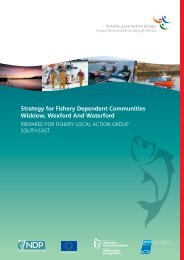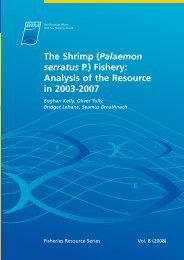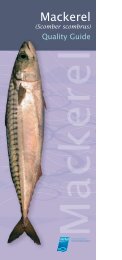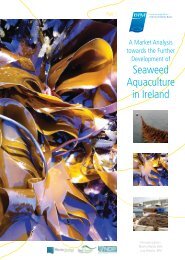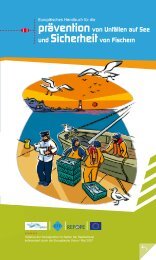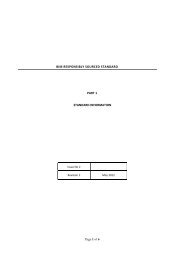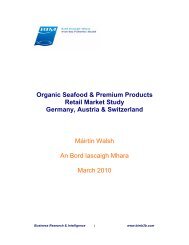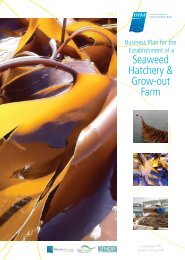Cultivating Palmaria palmata - Bord Iascaigh Mhara
Cultivating Palmaria palmata - Bord Iascaigh Mhara
Cultivating Palmaria palmata - Bord Iascaigh Mhara
Create successful ePaper yourself
Turn your PDF publications into a flip-book with our unique Google optimized e-Paper software.
5.4 Maintenance and cleaning of longlines<br />
Monthly checks and periodic inspections are necessary for maintenance. During the growing season, it is<br />
advisable to check connections of anchor ropes to the header rope, and attachment of buoys to the ropes for<br />
wear and tear. Buoy attachment ropes should be replaced if they are very worn or frayed. Periodic inspection of<br />
the anchors and chain connections by divers are required as metal parts corrode in seawater and attachments<br />
can break. Consequently, shackles should be replaced every 1-2 years as failure during the growing season can<br />
end in loss of whole longlines. Longlines can be moved or dragged out of position if a medium-sized or large<br />
vessel ties up to it. It is therefore advisable to assess the tension of the headrope occasionally and either<br />
reposition the anchors, or tighten the header rope if necessary.<br />
During the routine visits, the header ropes should be checked for growth of fouling algae and entangled floating<br />
seaweed. These should be removed frequently as they add surplus weight to the longlines and increase the<br />
drag. The kelps Saccharina latissima and Saccorhiza polyschides are often found as fouling algae, as well as<br />
smaller red algae. Other species of seaweeds frequently become entangled with the headrope, e.g. Ascophyllum<br />
nodosum, Fucus species, Himanthalia and Chorda. The species composition depends on the site.<br />
Settlement of mussel spat and sea squirts is also common (especially on the weights attached to droppers or<br />
nets) and should be removed as the longlines will become significantly weighed down. Headropes may be<br />
removed at the end of the growing season if the lines are not used for cultivating of other species. Storage of the<br />
ropes on land will ensure that fouling organisms will be completely dried up, so that they can be easily removed<br />
before re-deployment for the following culture season.<br />
34



